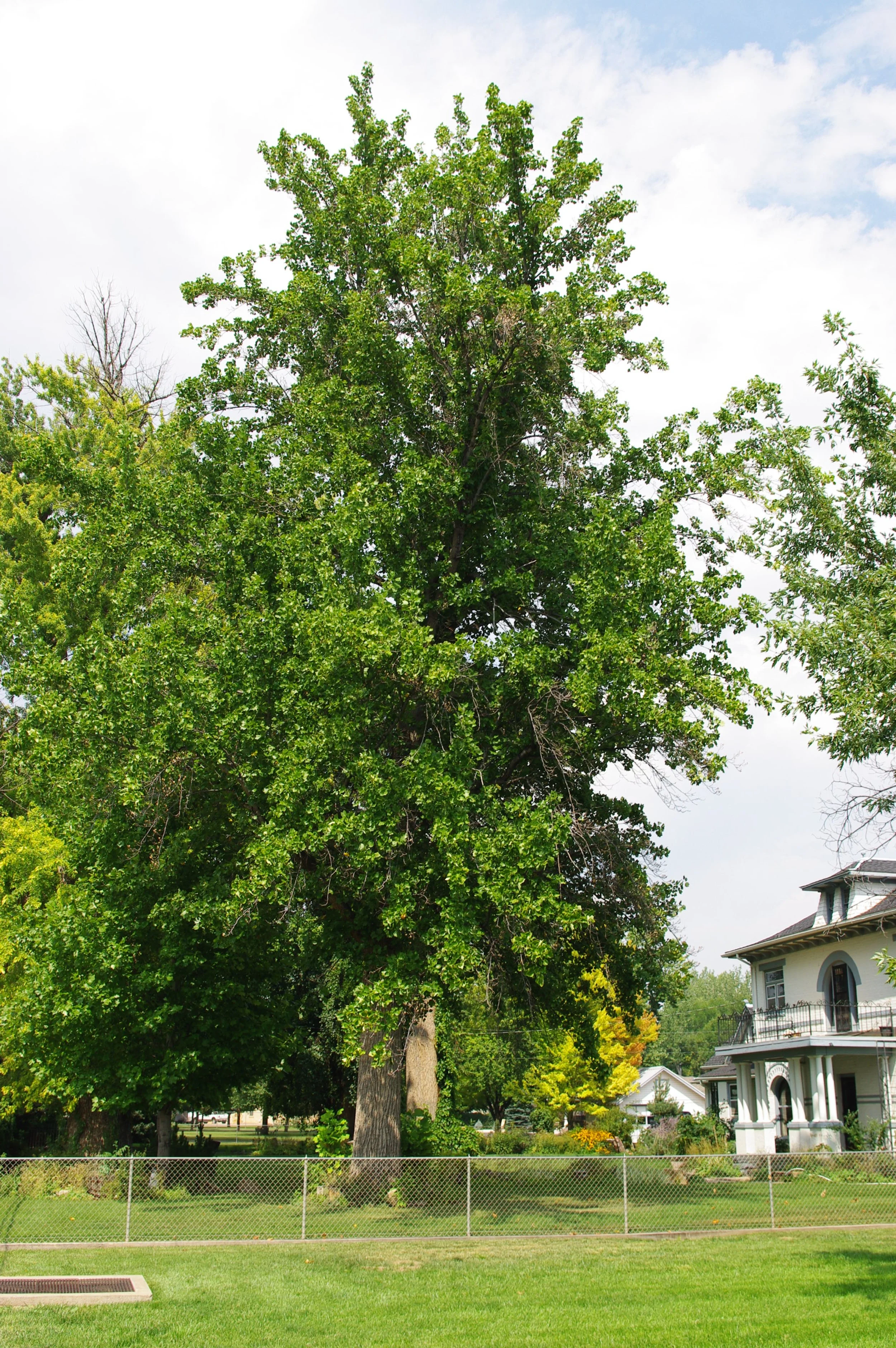tuliptree (Liriodendron tulipifera)
Second place champion tuliptree in Denver.
Species info:
Leaves: Deciduous, 4–6 inches wide, mostly four-lobed with a distinctive notched tip; often compared to a “cat’s face” shape
Leaflets: N/A (simple leaves)
Leaf Surface: Smooth and bright green above; turns golden yellow in fall
Bark: Young bark is dark green and smooth with white spots; matures into long, rough, interlacing ridges separated by ash-gray fissures; inner bark is bitter and aromatic
Flowers: Cup-shaped, 1½–2 inches wide, appearing in late May or June; six petals in two rows; light green-yellow with orange at the base; resemble tulips or magnolia blossoms
Fruit: Upright, conelike aggregate of samaras, 2½–3 inches long; winged seeds flutter down in autumn
Botanical: Liriodendron tulipifera
Family: Magnoliaceae
Mature Height: Up to 120 feet in native range; smaller in cultivation
Canopy Spread: Up to 50 feet
Foliage Type: Deciduous
Tree Shape: Pyramidal when young, rounded when mature
Flowers: Large, tulip-like, light green-yellow with orange blotches; appear after leaf-out high on the tree
Fruit: Persistent fruit provides food for birds
Fall Color: Bright yellow
Water Use: Prefers moist, well-drained, slightly acidic soil; sensitive to drought
Hardiness: Zones 4–9
Wildlife Value: Flowers provide nectar for bees (source of tulip tree honey); seeds eaten by small mammals and birds
Pests/Pathogens: None majorly noted; can be sensitive to poor soil or drought stress
Recommendations for planting: Recommended for most sites
Information sources:
Michael Dirr, Manual of Woody Landscape Plants (University of Georgia, 1990)
Ohio State University's Plant Dictionary.


